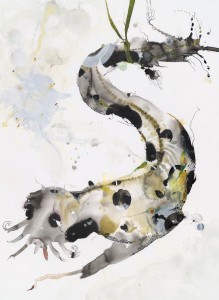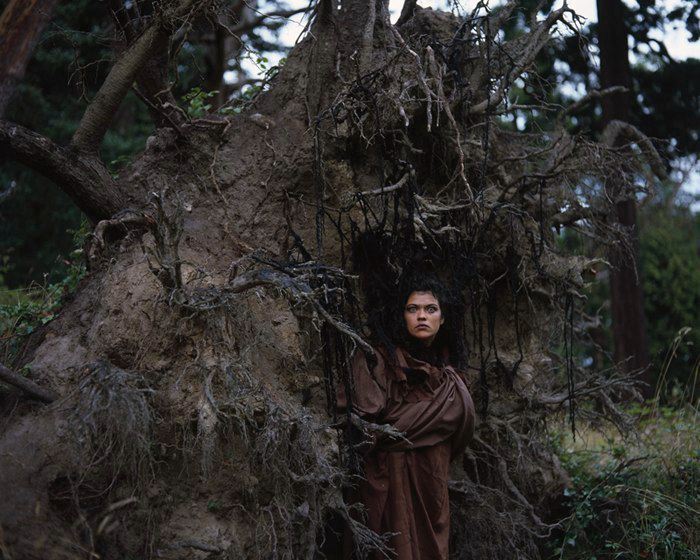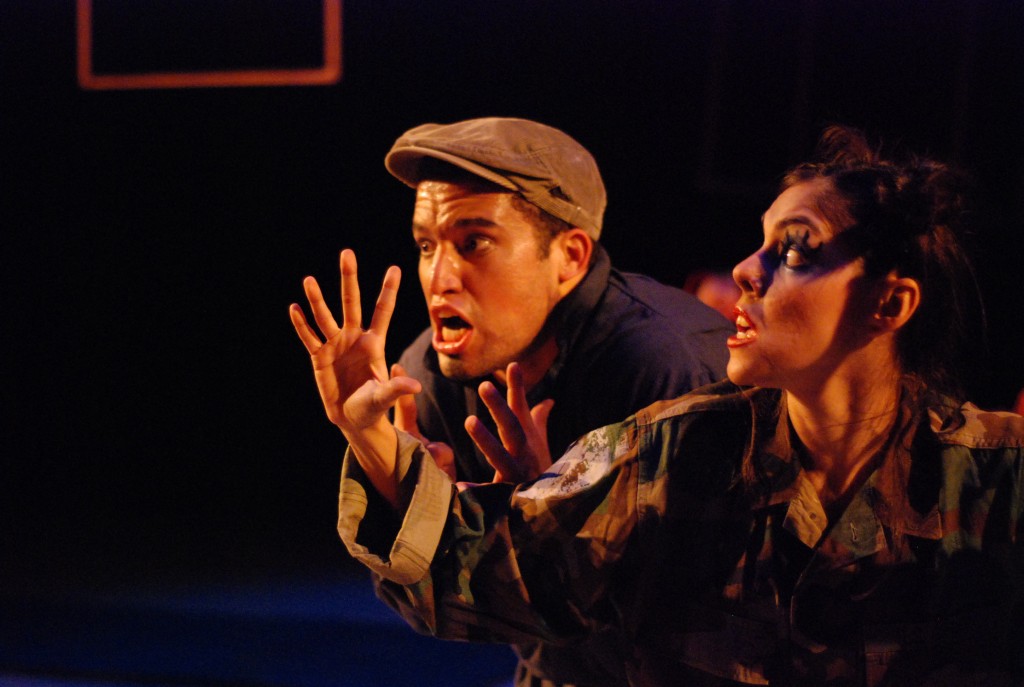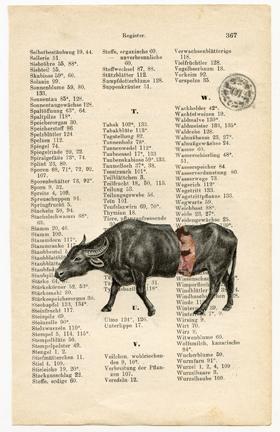
I’ve been writing so much about art politics lately, some of you might have forgot that Art Scatter also writes about arts and culture. That’s our main goal, actually. It’s just that all this politics stuff keeps happening.
In fact, between bouts with the Oregon Legislature (which didn’t seem to notice I was in the ring) I’ve been writing a fair amount about exhibits and performances. But not here — mostly for The Oregonian. So in lieu of writing something fresh (I’m a little tired, and I have other assignments due) I’m going to link to some of those stories.
First, though, a tip of the Scatter hat to Owen Carey, one of the unsung heroes of Portland’s performance scene, whose photographs have been documenting the movable feast of the city’s theater scene for decades. It’s more than documentation, really: It’s collaboration, and a distinct artistic contribution on its own. Like a great dance photographer — Lois Greenfield, for instance — Owen has the gift of disappearing even as he captures the perfect moment of movement that defines the style and liveness of a show. The photo above, from Portland Center Stage‘s current production of The Importance of Being Earnest, is a brilliant case in point: the airiness, the bubbles, the froth of the tea as it flies from the mouth of Gwendolen (Kate MacCluggage) while Cecily (Nikki Coble) sips daintily away, perfectly encapsulates the mood of Oscar Wilde’s comedy. If only the production had done the same!
Now, on to those links:
What if they gave a Depression and there weren’t any artists to record it? From Monday’s Oregonian, this piece about a small exhibit at the Portland Art Museum of WPA and other national arts program works from the 1930s and early ’40s, along with some comparisons to the Madame de Pompadour special exhibition and a bit on some paintings in the museum’s permanent collection by some of the Pompadour artists. The online caption, by the way, is wrong: That’s not a Joseph Stella, it’s a Maude Kerns.
 Neil Simon, American comedian: Also from Monday’s Oregonian (the full review ran online; a shortened version ran in print) is this look at Profile Theatre‘s production of Simon’s 1992 play Jake’s Women, a morose comedy about a guy whose marriage is falling apart — but also a play with a fascinating, Pirandellian subtext about the nature of writing and observation. Simon argues, therefore he is.
Neil Simon, American comedian: Also from Monday’s Oregonian (the full review ran online; a shortened version ran in print) is this look at Profile Theatre‘s production of Simon’s 1992 play Jake’s Women, a morose comedy about a guy whose marriage is falling apart — but also a play with a fascinating, Pirandellian subtext about the nature of writing and observation. Simon argues, therefore he is.
In the deep dark wood something wild and woolly waits: From last Friday’s A&E section of The Oregonian, this review of a couple of linked exhibits at The Art Gym — Wolves and Urchins, with work by Wendy Given, Hayley Barker and Anne Mathern (that’s Barker’s elegantly hideous monster in the illustration to the side, and Mathern’s wide-eyed photograph at bottom); plus Warlord Sun King: The Genesis of Eco-Baroque, a collaboration by Marne Lucas and Bruce Conkle.
The world is flat, and other artistic fables: From last Monday’s Oregonian, this review of Mixografia, an expansive exhibit at the Portland Art Museum of prints from the Los Angeles press and graphic arts center that’s created a name for itself by coming up with a technique to create prints that have three dimensions — in other words, multiples with height and depth. Nice trick — and artists from Ed Ruscha to Helen Frankenthaler to Louise Bourgeois and even sculptor George Segal have taken advantage of it.
He’s a real nowhere man, living in a nowhere land: Isn’t he a bit like you and me? Finally, from the Feb. 13 A&E, this essay about the planning disasters of our urban edges, prompted by a viewing of the architectural constructs of artists Jesse Durost and John Sisley at Fourteen30 Contemporary gallery, along with a consideration of the imaginative work of architect Robert Harvey Oshatz through the prism of an exhibition at the AIA Gallery. A bit of a hybrid piece of writing; maybe even a leap too far. That’s Scattering, friends.


 MELODY FOR THE MEEK. Portland artist Melody Owen has a pair of shows up in town, one at Elizabeth Leach Gallery and one in The Art Gym at Marylhurst University.
MELODY FOR THE MEEK. Portland artist Melody Owen has a pair of shows up in town, one at Elizabeth Leach Gallery and one in The Art Gym at Marylhurst University.
 Neil Simon, American comedian: Also from Monday’s Oregonian (the full review ran online; a shortened version ran in print) is
Neil Simon, American comedian: Also from Monday’s Oregonian (the full review ran online; a shortened version ran in print) is 

